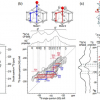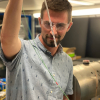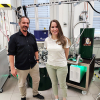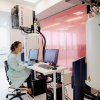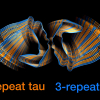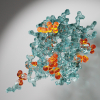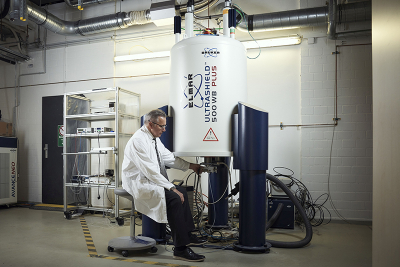
In the Collaborative Research Center for High Performance Compact Magnetic Resonance (HyPERiON) coordinated by the Karlsruhe Institute of Technology (KIT), researchers from KIT and the universities of Kaiserslautern, Konstanz and Stuttgart are jointly developing technology for compact high-performance magnetic resonance units. In the future, the devices could be used in the chemical and pharmaceutical industries, in medical practices or at border checkpoints. The German Research Foundation is funding the interdisciplinary group with more than 10.6 million euros for four years starting on 1 July 2022.
Magnetic resonance is both the most chemically specific and the most versatile measurement method for acquiring detailed information on the structure and function of molecular matter. This makes it the fundamental technology for characterisations in chemical, biological or materials research. However, its widespread use is hindered by its low sensitivity and the relatively high level of specialisation required for working with it. The HyPERiON CRC aims to change this by questioning conventional ideas along the entire signal processing chain. Its goal is to improve the sensitivity, resilience and usability of magnetic resonance in equal measure. The team headed by CRC spokesperson Professor Jan G. Korvink from KIT’s Institute of Microstructure Technology (IMT) seeks to reduce the volume of high-performance magnetic resonance systems from 2 m3 down to the size of a 10-L bucket—a factor of more than 200. This would bring them out of laboratories and enable their widespread use, for example in chemical and pharmaceutical production facilities, physicians’ practices or border checkpoints. “This is ultimately about exploring new and exciting applications in chemistry, biology and even chemical engineering,” says Korvink.
To achieve its goals, the CRC is focusing on the miniaturisation of all components involved in magnetic resonance technology: superconducting magnets, cooling systems, high-speed electronics, magnetic resonance sensors, devices for ultra-fast data transfer and devices for the nuclear spin hyperpolarisation of materials and biological samples. “Integrating all these technologies in a modern and portable platform will enable us to drive socially relevant applications such as diagnosing diseases, using medical implants, or discovering medicines”, says Korvink. The partners in the CRC expect the results of their research to make the use of magnetic resonance for fast and high-resolution characterisation of materials affordable for facilities with smaller budgets, and to advance research in chemistry and materials science in general.
There are many ways in which society’s well-being is crucially dependent on access to the best materials. But the requirements are complex and involve not only a material’s function but also its effects on our biological systems and the environment, and on how it can be recovered or broken down. “If materials can be characterised quickly and with high resolution for a very large number of variants with only tiny samples, and if we can perform the tests under operational conditions and analyse decomposition processes, then we’ll have a chance to find the best starting materials to fulfill our expectations. This is also important from the point of view of minimising the carbon footprint. HyPERiON is going to fundamentally change our capabilities for material characterisation and will train a new generation of young researchers and engineers in its application to societal challenges”, says Korvink.


